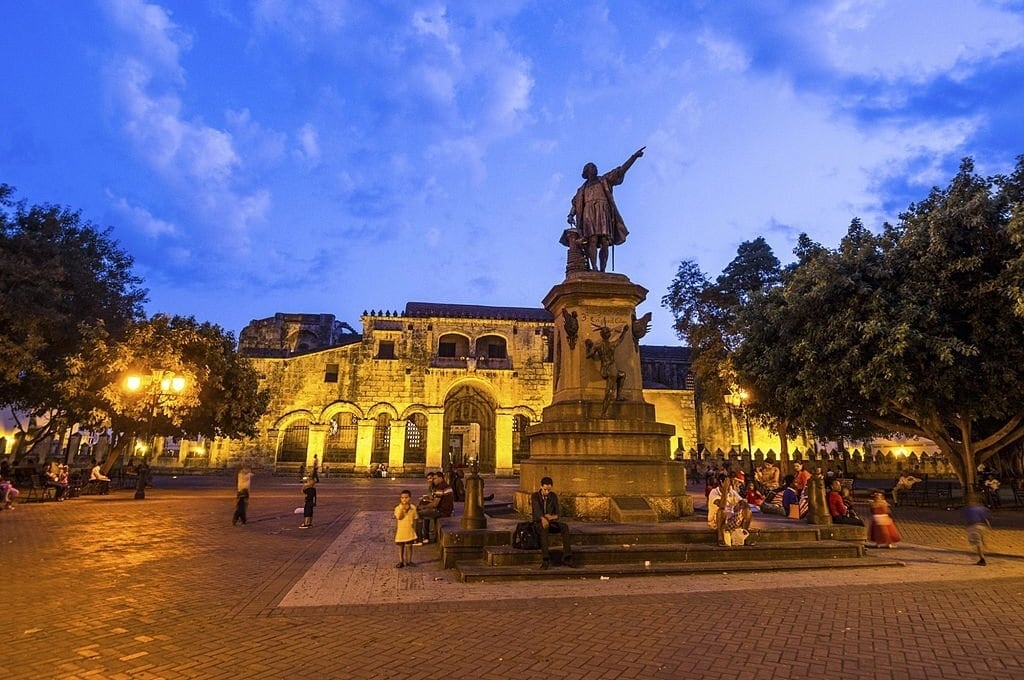


The capital of the Dominican Republic is one of the most historic cities in the Caribbean. A spearhead in the discovery of America, Santo Domingo today keeps among its streets places of leisure and shopping or natural sites such as the Tres Ojos National Park that have little to do with the past of the island.
But today we are going to focus on the colonial area of the city, to know the history of the most famous statue of this site: the one erected in honor of Christopher Columbus.
The Christopher Columbus monument is located in the colonial city of Santo Domingo. Columbus Park is the exact spot where the statue is erected, surrounded by other very important historical buildings such as the Cathedral of Our Lady of the Incarnation, considered the first cathedral in America.
In the colonial area we can also visit other monuments such as the Alcázar de Colón or the Casas Reales museum, which are certainly worth a visit due to their proximity to the Christopher Columbus monument. Other places to visit are the Panteón de la Patria, a mausoleum where the tombs of some of the most famous people of the Dominican Republic are kept.
If you want to know the colonial area of the capital of the Dominican Republic and you are in Punta Cana, it is best to hire one of the tours that depart daily to the city. Here you can find all the information about our excursion to Santo Domingo, one of the most complete in the country.
Now, let's get down to work to really get to know the history of the Christopher Columbus monument. The figure was made in bronze by the famous sculptor Ernesto Gilbert between 1885 and 1886. Made in France, it was transported to the Dominican capital in 1887 and inaugurated on February 28th of that same year.
The statue consists of the figure of Christopher Columbus pointing north, to some undetermined point of America that he discovered when he thought he would reach India.
The curiosities of the Christopher Columbus monument are many, and the statue keeps several details that review some of the most important moments of the admiral's biography.
For example, the caravels with which Columbus reached the New World on his first route. These seem to be coming out of the pedestal where the statue stands.
But one of the most relevant data that we can see on the pedestal is the figure of Queen Anacaona, leader of the Tainos when Columbus landed in Hispaniola on his first voyage.
The art of the sculpture is magnificent, and it is worth stopping to observe each of its pieces to learn a little of the history and culture of Santo Domingo.

Christopher Columbus had a frenetic activity in his respective voyages to America. There were four voyages across the sea, almost all of them departing from the port of Palos, in Huelva (Spain).
The first of them was planned in Seville, and took Columbus to the island now occupied by the Dominican Republic and Haiti. Named Hispaniola, the first settlement was the Fort of Navidad, built with the remains of the stranded Santa Maria.
On the second voyage, already better prepared, Columbus decided to establish the first city of the New World in the north of the country, known as Villa Isabela. The poor geographic layout of this place meant that in the end the urbanistic interest was redirected elsewhere, and that was when the current capital of the country, Santo Domingo, was founded.
And although when we walk through the city today we find many monuments such as the lighthouse or the Christopher Columbus monument, the real founder of this city was his brother, Bartolomé Colón.
The anecdote is that when the city was founded in 1498, Bartolomé founded it on the east side of the Ozama River. When Nicolás Ovando came to power, he decided to start building the most important buildings in the western part of the city, on the west bank of the river. So the colonial city that we can visit today has Nicolás Ovando, who curiously does not bear the surname Colón, as its main culprit.